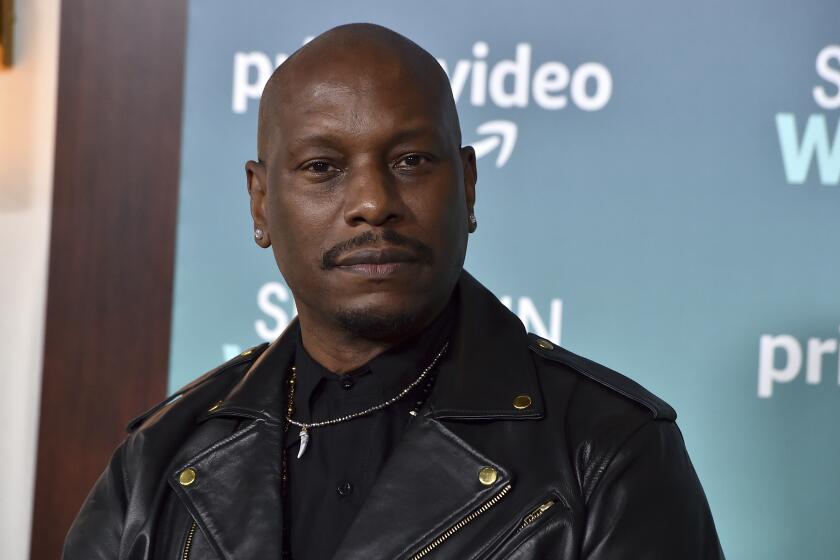Cannes Film Festival 2010: Stephen Kijak rolls with ‘Stones in Exile’
Reporting from Cannes, France — “I played music in high school, I worked in record stores, music was my No. 1 fix,” says Stephen Kijak, adding it all up. “I don’t know why I’m making films, I should have been in a band.”
As a filmmaker, director Kijak has done the next best thing. He’s made “Stones in Exile,” a gorgeously entertaining documentary premiering at the Cannes Film Festival that provides a fascinating window into the Rolling Stones experience via a detailed look at the making of one of their albums.
Not just any album but 1972’s “Exile on Main Street,” recorded just down the road in Keith Richards’ rented South of France villa in Villefranche-sur-Mer, an album that’s considered one of the best any band ever made.
“It’s the one [album] they kind of held back,” says the 40-year-old Kijak, who manages to be both relaxed and focused as he chats in the deserted lobby of a luxury hotel. “It means so much to so many people, they wanted to do something special for the reissue.” Which meant not only adding 10 new tracks but commissioning this one-hour doc that is headed for broadcast on the BBC after a Cannes screening with Mick Jagger in attendance.
Kijak got a call “out of the blue” from the people at Jagged Films, Jagger’s production company, because the Stones had been impressed with his earlier music doc, “Scott Walker: 30 Century Man.” After a 20 minute i-chat with Jagger, a flight to Paris to meet the man in person and a flight to New York to meet Richards, Kijak began working. “I don’t remember a point where I got the job,” he says. “I just sort of started.”
Kijak was hired because he and the Stones were on the same wavelength about the film. “It was going to be a memory film, a representation of memories, but something unconventional, avoiding traditional talking heads,” Kijak recounts. “It should suck in both the die-hards and the newbies. It was not just selling records, it was about the legacy of the record.”
Key to the eventual shape of the film was Kijak’s notion that it should “follow the aesthetic of the album cover,” which meant embracing “the visual take of Robert Frank,” the master photographer who took the cover photographs. “It’s like a freak show, black and white, grungy, enigmatic, a little scary,” Kijak explains. “There’s a lot of darkness, a lot of confusion.”
As it turns out, Frank shaped this film in more ways than one. The Stones have a warehouse on the outskirts of London and, says Kijak, “it’s like that scene at the end of ‘Raiders of the Lost Ark,’ everything is in there — drums, guitars, a film vault.” Inside that vault were 30 to 40 boxes of unseen outtakes, some 20 hours of footage from Frank’s legendary, never officially released Stones documentary with the title that can’t be printed in a family newspaper.
“Almost everything of the Stones [physically] moving is from that film or the outtakes,” says Kijak. “There’s a scene of Keith and Mick playing a simple blues in a hotel room that had our jaws dropped. That stuff is a gold mine, it’s yet to be fully exploited.”
Instead of interviewing people first, Kijak started with the archive footage and constructed the entire film around its style. “I wanted it to be all of a piece, to keep it in the same world, with the same texture,” he says. “I didn’t want to take people out of that time.”
What that meant in practice is that all the contemporary interviews have the same vintage black and white look as the old Frank footage. In fact, cinematographer Grant Gee shot some of the sessions with the same 16 mm Canon Scoopic model camera that Frank used. Captured this way are all the Stones, Richards’ former girlfriend Anita Pallenberg and musicians like Bobby Keyes and Don Was. The only key person not represented is Jagger’s ex-wife Bianca, who, Kijak says, “refused to be involved.”
Also not dwelt on, though it is mentioned, is the use of hard drugs that was a major component of the “Exile on Main Street” experience. “People love to focus on the scandal, the debauched side of life there, drug stories are more attractive to people, and while you can’t separate that, it means music takes a back seat. I thought, ‘Wait a minute, there’s a great album here, you have all the insiders, let’s explore the work,’ ” Kijak says.
“I’m very much about process, about getting as authentic a feeling as possible about the inside of their heads. That’s what I miss in most music films, I want to be in there with them.” With “Stones in Exile,” you definitely are.
Clicking on Green Links will take you to a third-party e-commerce site. These sites are not operated by the Los Angeles Times. The Times Editorial staff is not involved in any way with Green Links or with these third-party sites.
More to Read
Only good movies
Get the Indie Focus newsletter, Mark Olsen's weekly guide to the world of cinema.
You may occasionally receive promotional content from the Los Angeles Times.











